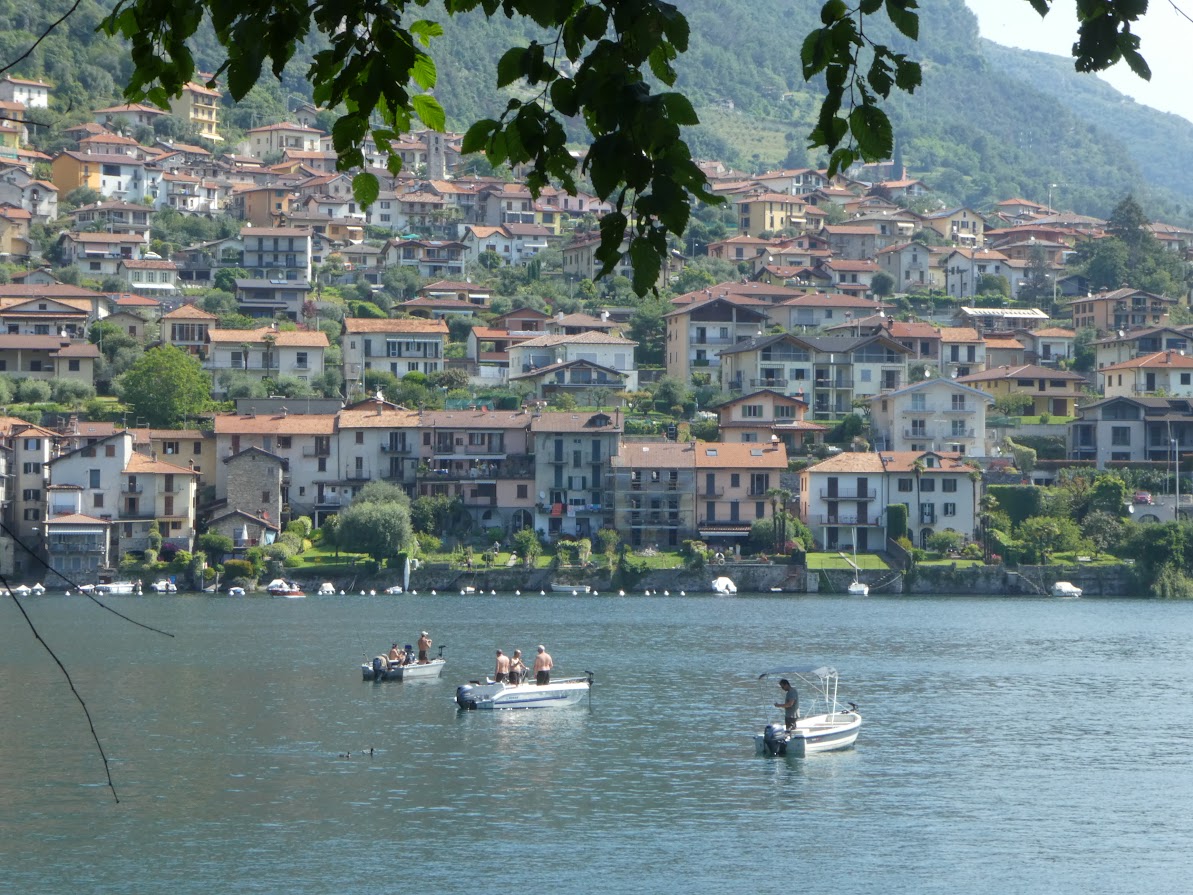
Isola Comacina is the only island on Lake Como. Its past glory and tragic destiny results from its strategic position close to the narrow channel in the lake between the promontory housing the Villa del Balbianello and the town of Lezzeno on the eastern shore. Whoever occupied Isola Comacina could control navigation on the lake southwards to Como itself and on to Milan or northwards towards the Val Chiavenna and the Valtellina with their access over the Alps to the river systems of the Rhine and Danube. Isola Comacina was to pay a heavy price for its valued location.
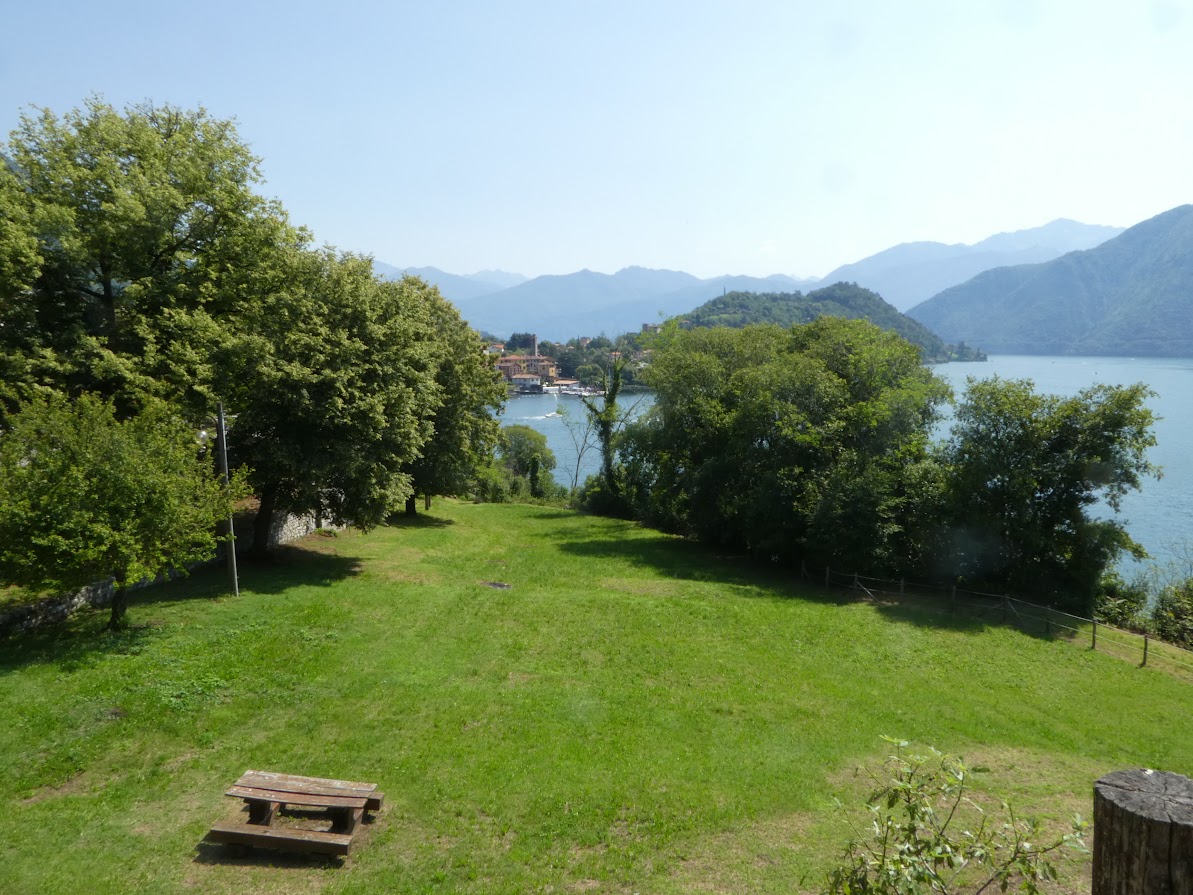
Nowadays Isola Comacina is a beautifully serene spot totally uninhabited for reasons we will uncover, but well maintained for those visiting its ancient ruins or the three houses for artists designed by Pietro Lingeri. These three houses were built in 1939 for the Milanese Brera Academy of Art to whom the island had been entrusted by the Italian state. The island is only 600 metres long by 200 metres wide and so is very easy to explore. It is a mere 250 metres from the mainland with the point of embarkation at Ossuccio’s Antiquarium (a mediaeval hospital). The Antiquarium forms part of the complex around the Chiesa di Santa Maria Maddalena whose bell tower is one of Lake Como’s iconic structures. A visit to the island is highly recommended not just for the archaeological and architectural aspects but also because it’s a calming tranquil spot isolated from the sometimes frenetic mainland with glorious views up, down and across the lake.
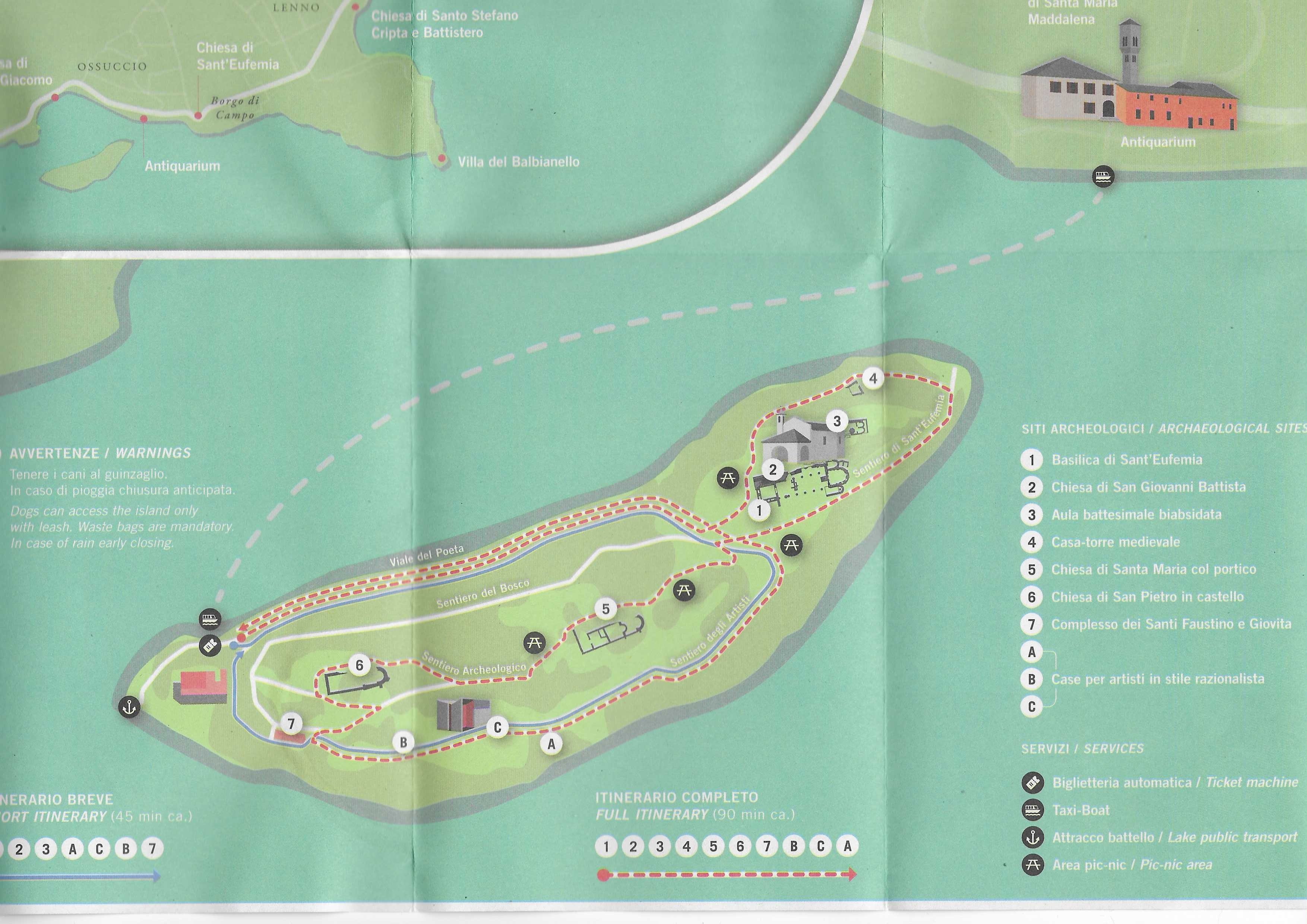
Isola Comacina’s distant history is still visible amongst its ancient ruins, as with the mosaic of a fish dating back to the 5th century within the Baptistry alongside the Church of John the Baptist. The frescoes within this same structure date from within the 8th and 9th centuries. The ruins of the Basilica di Sant’Eufemia date back to their origin in the 7th century. The basilica would later be remodelled in the Romanesque style in the 11th century before it and all the other religious buildings and walled defences were destroyed in February 1169.
Isola Comacina in the Early Mediaeval Era

Walking around the tranquil island today, it is hard to imagine it as the vibrant religious, political, and military base it was back in the 11th century. Its role might be compared with Baghdad’s ‘Green Zone’ in that it provided a secure environment for the military, religious and cultural elite and also a safe area for the residents of its hinterland on the shore, namely Colonno, Sala, Ossuccio and Campo, to retreat into in times of danger. Its monastery, castle and numerous churches were all enclosed within defensive walls with a naval fleet on hand to patrol and protect access from the lake.

Its defences, none of which survive today, were originally built by the Romans and later enlarged under Byzantine rule in the 6th century to strengthen what was known as the ‘Linea Greca’ whose primary purpose was to protect Como. In addition to the island itself, the other two elements of defence were Como’s city walls and the Torre Baradello standing sentinel over the Pianura Padana. In the 520’s Isola Comacina was commanded by the Byzantine Captain Francilione who held out against the Lombard invasion from Germany for twenty years. Francilione controlled considerable territory on the lake until gradually he was forced back into his stronghold on the island. The Lombards were unable to mount an invasion across the mere 250 metres of lake but did maintain a siege of the island for six months before coming to an agreement with Francilione granting him free passage to the Byzantine capital in Ravenna.

The island then went on to prosper under the culturally and religiously benign rule of the Lombard Queen Teodolinda and beyond until the start of the 12th century. Its fortunes then took a dramatic change on the outbreak of the ten years of warfare between Como and Milan in 1118.
Isola Comacina in the 10 Year War with Como
In 1118 Milan declared war on Como seeing it as a trading rival and resenting Como’s ability to extract duties on goods passing through its territory and on the lake. Isola Comacina decided to side with Milan and set about building seven galleys to transport troops down for an attack on Como in the following summer. Wars in those days were conducted as seasonal affairs with fighting restricted to the summer months. In 1119, the island duly disembarked its seven galleys of troops in Laglio who then preceded to march south as far Cernobbio where they were met by Como’s cavalry on the banks of the River Breggia close to the modern day Villa Dozzio. Round one went to Como.

The next season’s fighting (1120) saw galleons from Isola Comacina team up with ships from Menaggio, Nesso and Gravedona to descend the lake and await the outcome of a land battle between the Milanese and Como troops. The outcome was a treaty and an agreement to cease hostilities until the next warring season of August 1121. Como used the time granted them to build up their own fleet of galleons and then duly launched them against Isola Comacina provoking a naval battle in the waters between the promontory of the Villa Balbianello and Lezzeno. Como won the battle following it up two days later by returning to destroy the rest of the island’s fleet. They returned yet again that summer to lay waste to the towns of Campo, Sala and Colonno whose inhabitants fled to seek safety within Isola Comacina’s defences. Como ended the season of 1121 with a successful attack on Bellagio.

In 1124, Como made two attacks on Isola Comacina which ended with Como making an offer of peace once they had again sacked Campo. The island refused the peace offer provoking Como into laying waste to the nearby towns of Mezzegra, Colonno and Menaggio. Como’s run of good fortune against the much larger community of Milan could not last for ever particularly once Milan enrolled other cities such as Pavia, Cremona and Lecco to join their cause. Como was finally and convincingly defeated in 1131. The victors tore down the city’s walls, sacked all buildings other than the churches, convents and monasteries, and forbade trade and markets. Como as a functioning city did not exist for the next thirty years, and Isola Comacina could relax with its local enemy vanquished.
Federico Barbarossa
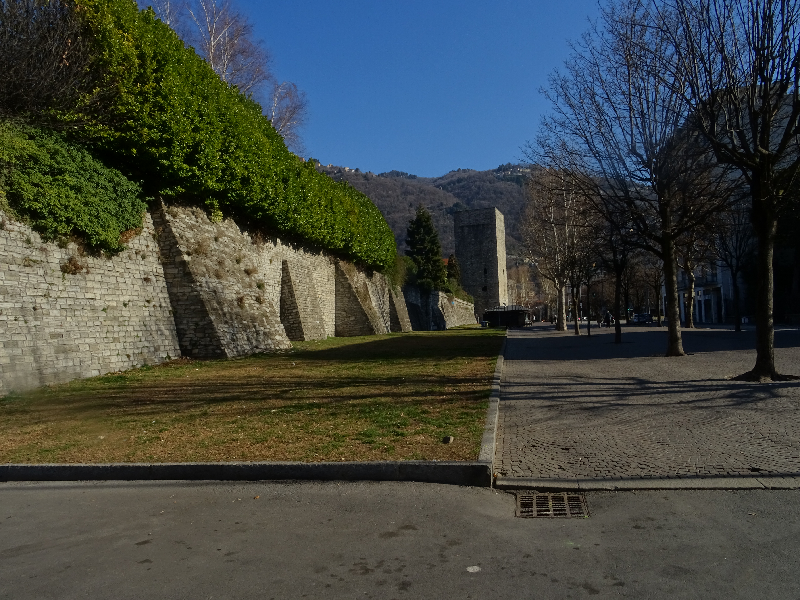
The fortunes of both Isola Comacina and Como itself would take another turn on the arrival in Italy in 1158 of the recently appointed Holy Roman Emperor, Federico Barbarossa. The purpose of his first armed invasion of Northern Italy was to persuade the Milanese to recognise his dominion over the city. In achieving this he also forced Milan into restoring freedom to the cities of Como and Lodi. He then meted out the same destruction on Milan as the Milanese had inflicted on Como thirty years previously. Namely its defensive walls were torn down and most buildings apart from churches, monasteries and convents were destroyed. With her new powerful ally, Como’s ill-fortune was reversed with Barbarossa investing heavily in the city’s defence against attacks either from Milan or from any of Milan’s allies on the lake. He rebuilt Como’s Torre Baradello and the city walls of which over 70% still stand today. He then turned his mind to the last element in the ancient Byzantine ‘Linea Greca’ – Isola Comacina.
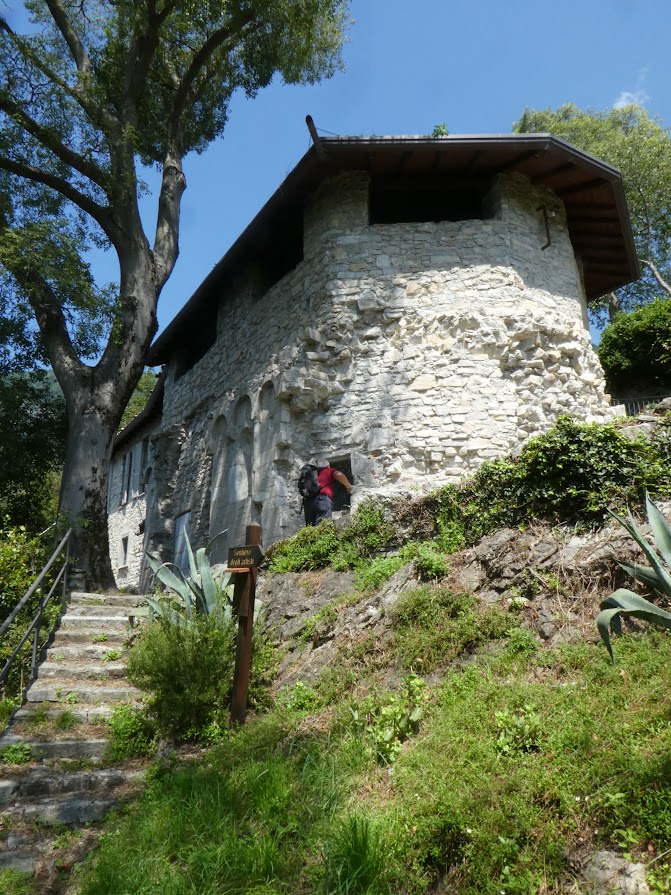
The story goes that in 1162 Barbarossa sailed single handed to the island and simply shouted over to the islanders to surrender. Barbarossa had established such a ferocious reputation that the islanders immediately complied without argument. The island’s submission to Barbarossa’s authority was sufficient for him but not for Como. The Comaschi were intent on bloodthirsty revenge for the island’s allegiance to Milan during the ten years war.
The Destruction of Isola Comacina
In February 1169 a force from Como allied with troops from the semi-independent state of the Tre Pieve (Gravedona, Dongo and Sorico) attacked the island causing the nuns from the monastery of Saints Faustino and Giovita and all the priests and acolytes of the island’s churches to flee to Varenna. Every building was then burnt and destroyed and the defensive walls pulled down. Also, contrary to the established rules of war at the time, the destruction included the monastery, the Basilica and the six other churches.

Following this complete destruction of all habitations on Isola Comacina, Como’s Bishop Anselmo Della Torre cursed the island in the following terms:
‘The bells will never ring again, stone will not be set upon stone, no one will ever host you again, on pain of violent death.’
Anselmo Della Torre
The curse was not entirely effective in that the Benedictine Convent of Saint Faustino may have been established back in 994 but the current building was constructed after the massacre of 1169. The same goes for the current Church of Saint John the Baptist which was built towards the end of the 15th century on top of the ruins of the original church destroyed in 1169. It was subsequently remodelled on Baroque lines in 1635 with the bell tower added in 1675.

However the island did remain mostly unoccupied for the next 750 years, until it fell into the ownership of the King of Belgium who passed it on to the Italian Royal Family in 1919. However even now, there seems a reluctance for anyone to live on the island in spite of the three studios for artists built for the Brera Academy.
Historical Re-enactments
St. John the Baptist is the patron saint of the island and his saint day is celebrated on June 24th. It is on or near this date (the last Saturday in June) when the fatal destruction of the island back in February 1169 is re-enacted in a massive spectacular firework display which engulfs the entire length of the island. The Sagra was suspended for two or possibly three years but it was held again this year, as another welcome sign of local recovery from Covid. The event is so popular that the roads to Colonno, Sala and Ossuccio are practically impassable for hours. One excellent option for travelling from Como and viewing the Sagra is going on the cruise organised by the Navigazione specifically for the event.

While the Comaschi may not be so proud of their unprincipled destruction of the island so many years ago, they are delighted to remember and re-enact the arrival in March 1159 of their saviour from Milanese oppression – Federico Barbarossa. The Palio del Baradello is a series of events and activities intended to mirror the festivities laid on for Barbarossa when he landed on the shores of Como. It is held from the end of August to the beginning of September. As with Isola Comacina, the celebrations are not held on the actual anniversary of the original event but are timed to coincide with the local saints day with Como celebrating Saint Abbondio’s day on August 30th.
Visiting Isola Comacina

The island has a distinct still atmosphere of its own resulting partly from its relative isolation but also by the ample evidence amongst its ruins of its tragic past. For the last three years the island has been off limits to visitors since its single landing stage was deemed unsafe. Fortunately the landing stage has now been repaired and visits were permitted again from this April.
Tickets for the boat crossing and entry to the small museum cost €6 and are on sale within the Antiquarium.
Research Sources
Ettore Maria Peron’s book Storia di Como, published in 2017 by Edizioni Biblioteca Dell’Immagine was invaluable in writing this article.
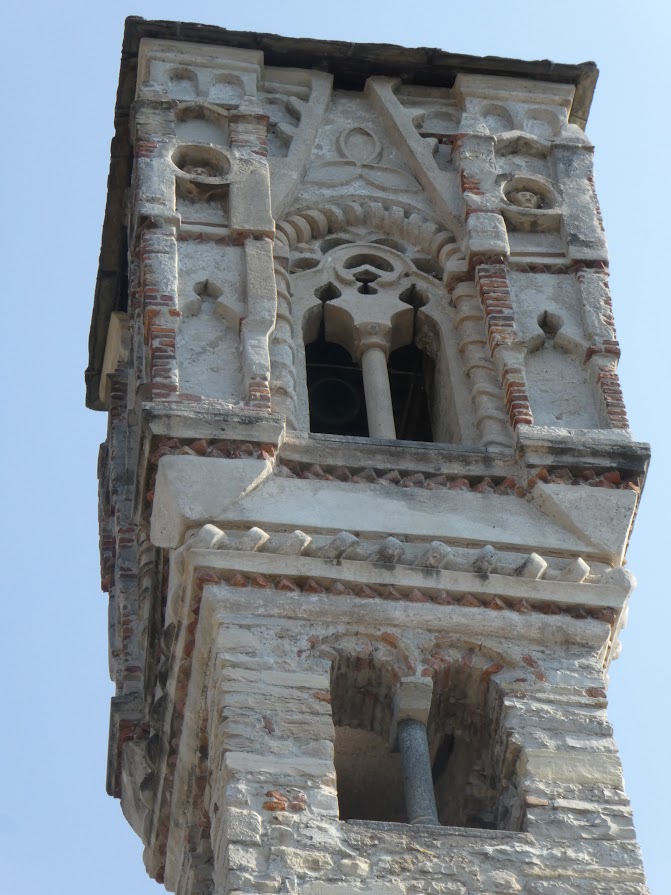











Another wonderful, informative post. Well done and please keep them coming
LikeLike
Thanks for your encouragement.
LikeLike
Thanks for interesting story of Isola Comacina. Any other stories to tell?
LikeLike
Watch this space – always other stories to tell!
LikeLike